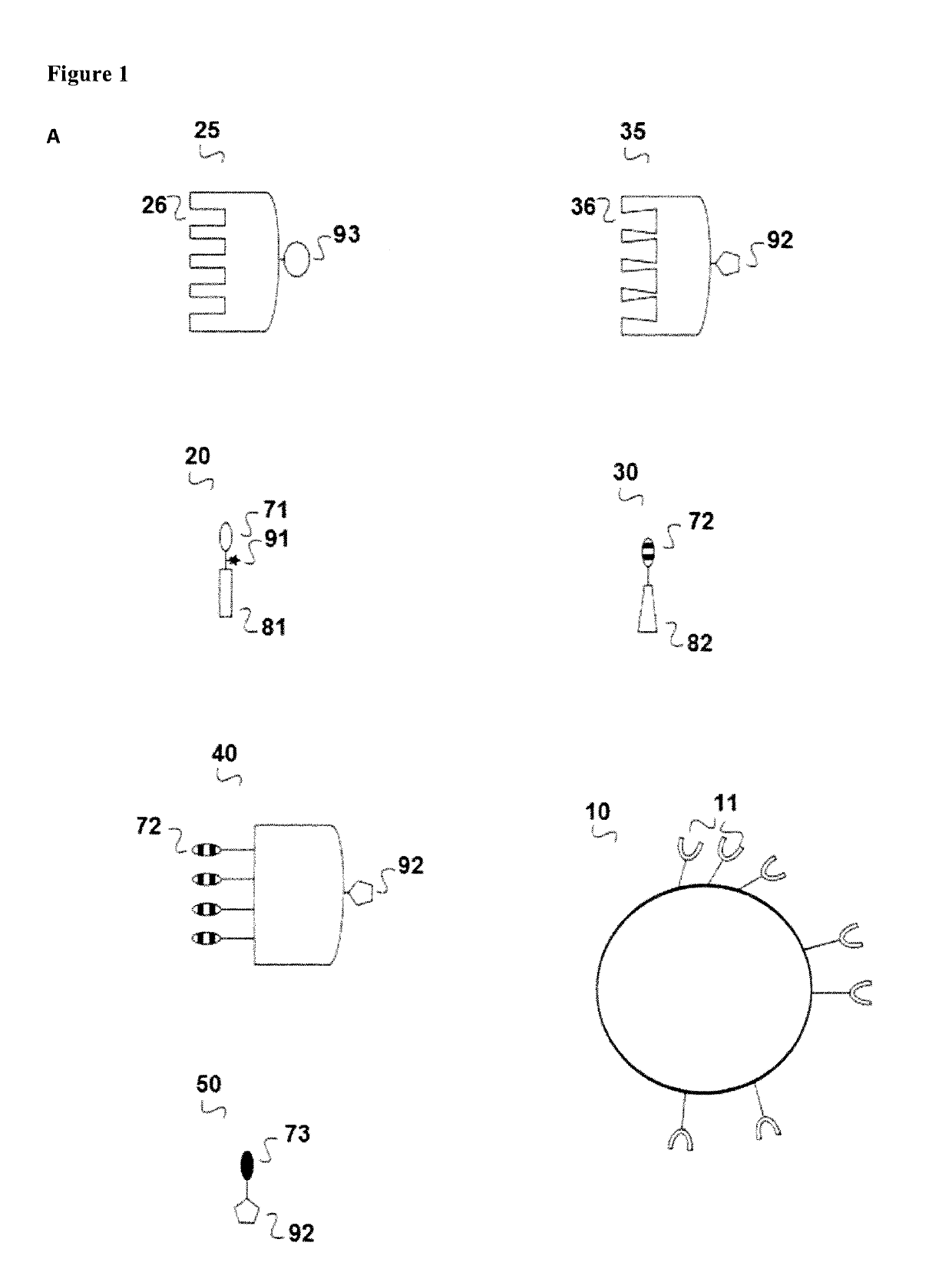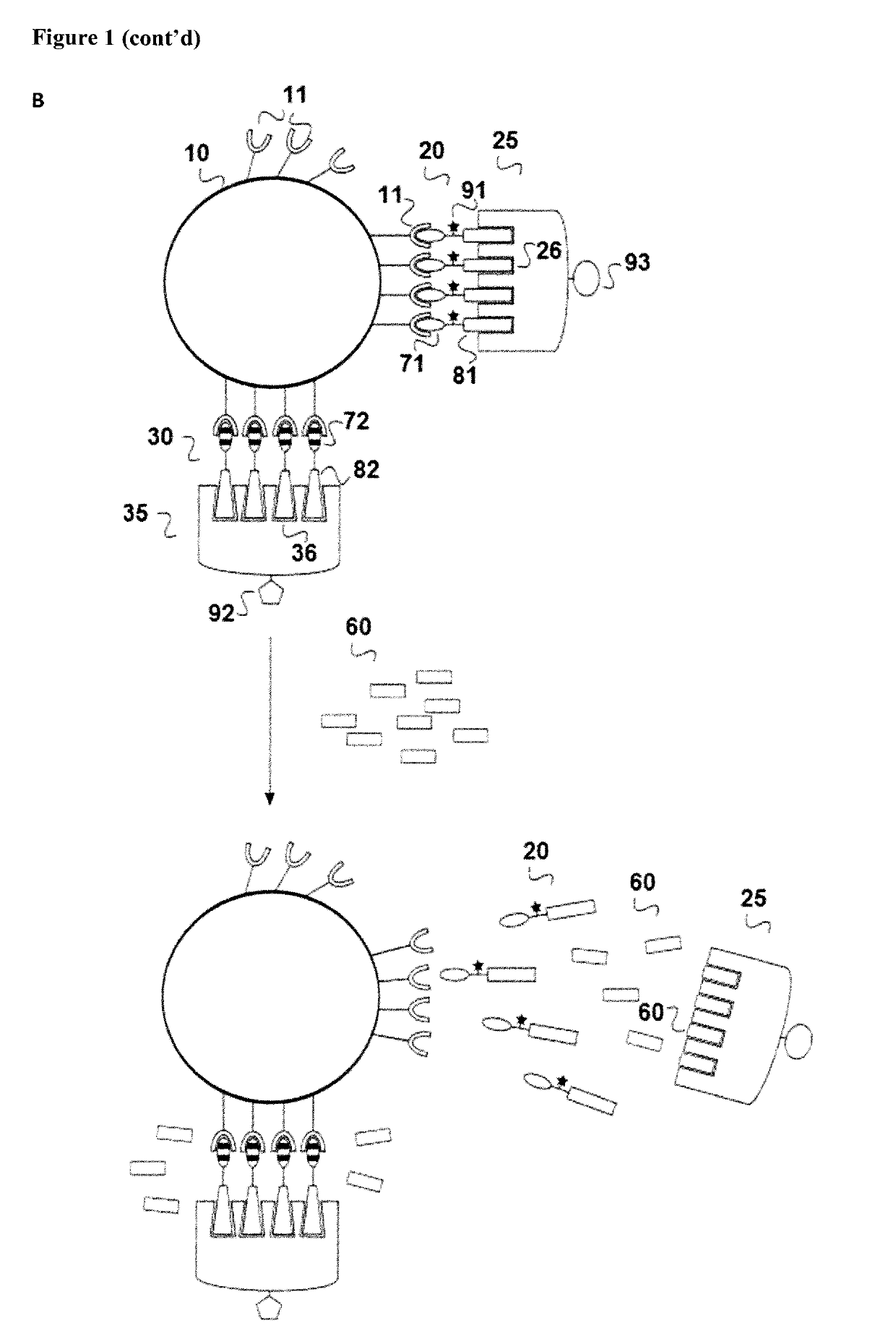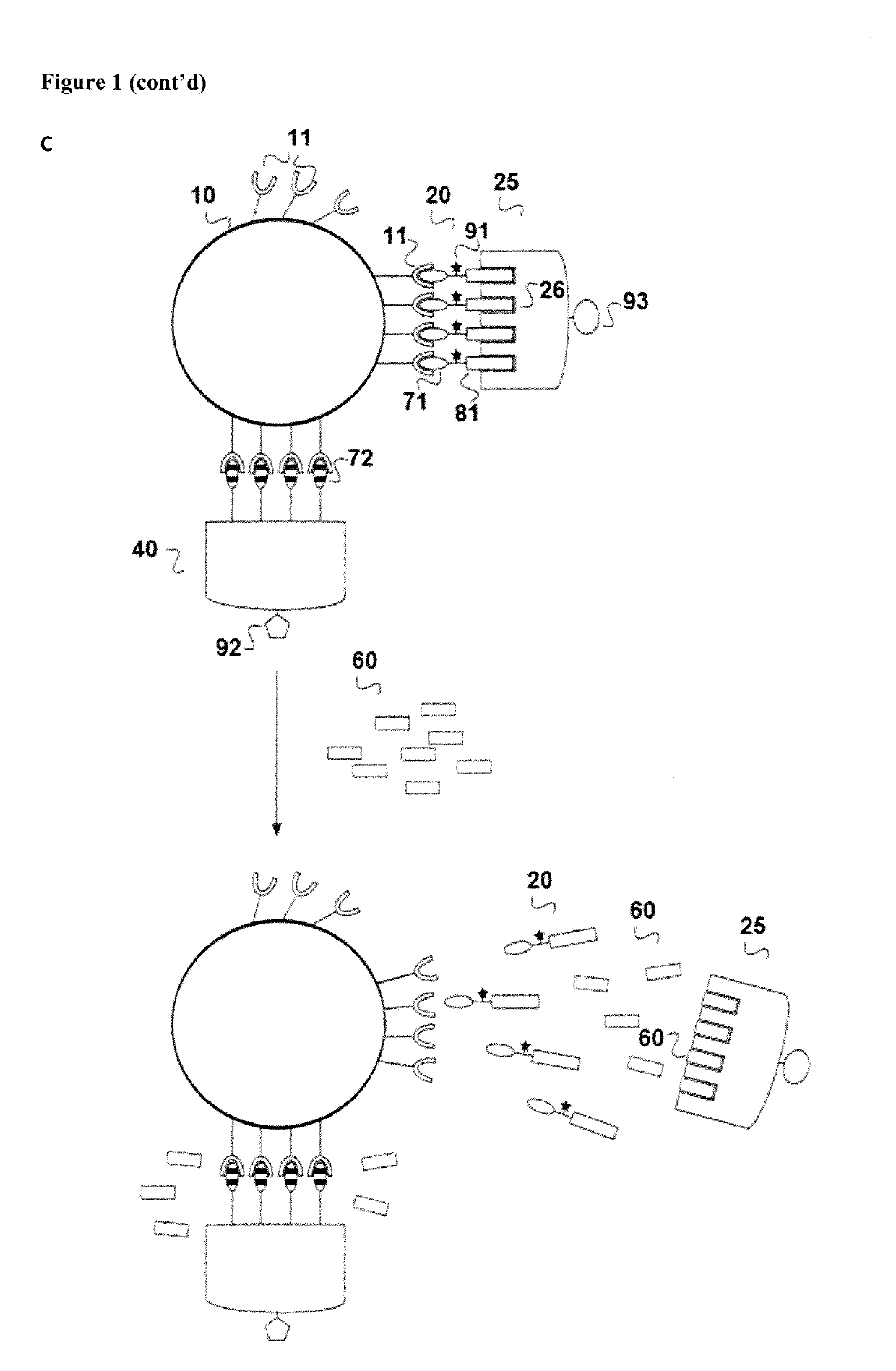Combination of reversible and irreversible cell labeling for analizing receptor-ligand koff rate
a technology of analizing receptor and cell labeling, which is applied in the field of conjugation of reversible and irreversible cell labeling for analizing receptorligand koff rate, can solve the problems of requiring specific instrumentation, requiring quite laborious assay setup, and exposing the researcher to bias
- Summary
- Abstract
- Description
- Claims
- Application Information
AI Technical Summary
Benefits of technology
Problems solved by technology
Method used
Image
Examples
example 3
of Double Staining with Reversible and Non-Reversible MHC Multimers
[0214]With the experimental setup for a flow cytometry-based koff-rate assay described above, analysis can only be performed with highly purified antigen specific T cell populations, T cell clones or TCR-transduced T cells. In these cases, gating on living cells should be sufficient to identify the cell population of interest throughout the acquisition of ligand dissociation kinetics. However, the analysis of antigen-specific T cell populations directly ex vivo without previous sorting or cloning steps also requires stable identification of the target population during the koff-rate assay. Therefore, the inventors tested whether this can be achieved by an additional antigen specific non-reversible staining (FIG. 4A). Conventional MHC-multimers consist of recombinant pMHCs that are biotinylated at the C-term and bind with these domains with very high affinity to Streptavidin. These bindings are not disrupted in signif...
PUM
| Property | Measurement | Unit |
|---|---|---|
| temperature | aaaaa | aaaaa |
| temperature | aaaaa | aaaaa |
| dissociation rate constant | aaaaa | aaaaa |
Abstract
Description
Claims
Application Information
 Login to View More
Login to View More - R&D
- Intellectual Property
- Life Sciences
- Materials
- Tech Scout
- Unparalleled Data Quality
- Higher Quality Content
- 60% Fewer Hallucinations
Browse by: Latest US Patents, China's latest patents, Technical Efficacy Thesaurus, Application Domain, Technology Topic, Popular Technical Reports.
© 2025 PatSnap. All rights reserved.Legal|Privacy policy|Modern Slavery Act Transparency Statement|Sitemap|About US| Contact US: help@patsnap.com



